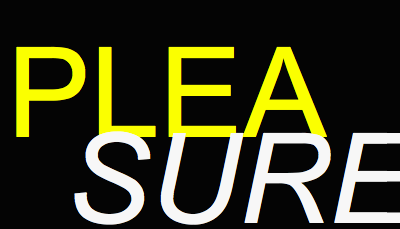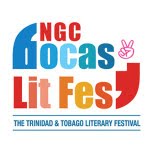ONE DAY, it all clicked. Miquel Galofré was at his grandmother’s house at Sabadell, a small city 30-minutes from Barcelona, Spain. He was listening to the Rolling Stones’ “Still Life”. He was 12-years old.
“I was a neglected child, my parents were too young and they had problems,” he says. “I had to handle a lot when I wasn’t ready for it. So the world was not a nice place for me at that time. I cried a lot in my bed.”
“But things got better when, as a teenager I discovered music and films. The click was a Rolling Stones cassette when I was 12. And now I use all the feelings I have experienced in my life, in film,” the film director and editor says.
Galofré’s description of his own childhood evokes scenes from his most recent film, “Art Connect”. That film, which features children coming to terms with their problems through music, dance and painting, was awarded Best Trinidad and Tobago Feature Film at the Trinidad and Tobago Film Festival (TTFF) in September. It also took home the People’s Choice Award for Best Documentary Film.
“With ‘Art Connect’ I basically wanted to do two things,” Galofré says. “I wanted to help a group of teenagers from Laventille to be happier. And I wanted to show in a film that this kind of program does work and they should be done in every school.”
Like the titles of his other films (“Why Do Jamaicans Run So Fast?”, “Hit Me With Music”, and “Songs of Redemption”) suggest, Galofré is a filmmaker interested in music and the uplifting potential of film. Whether set in a Jamaican prison or the Success Laventille Secondary School, he tells deftly-edited, immaculately-paced stories that weave several elements but ultimately – no matter how dark the subject-matter – end up blossoming into lyrical outpourings of love.
“A film should hit you and give you energy!” the director says. “You should come out the cinema feeling able to do anything, with a smile in your face and in a rush to make your dreams come true. Like a good song, it should make you stand up and move, with a big smile.”
***
Miquel Galofré was born on June 1, 1970.
“I was conceived in Ibiza, the small, beautiful Spanish island known for crazy parties and drugs,” he says. “And I was born nine months later in Barcelona, Spain.” He is reluctant to talk in detail about his parents, but says, “I didn’t grow up with them and I was a very sad child, feeling guilty for all the dramas, fights, abuse and alcoholism that were around me.”
Galofré, 44, traces his passion for art, generally, to that moment when he was 12 at his grandmother's house listening to "Still Life".
"When the riff of the guitar of the first song ("Under My Thumb") started, my life changed for ever," he says. "That energy woke up everything in me! I got goosebumps, tears welled in my eyes. I had a burning need to jump and a strong wish to live!" He also recalls the impact of a favorite toy.
“My grandpa had some Super-8 cameras and that was my favourite toy ever,” he says. “Unlike other kids, I didn’t enjoy cartoons, fantasy, or kid’s games but I always loved to look at the world through the lens. To this day, I think I use cameras as a tool to find beauty in the world. And I started very young. At 12, I started editing with Betamax videotapes and I never stopped.”
By the time he was eighteen, he was seeking work and found the job that cemented his passion.
“I saw an ad on TV,” Galofré says. “They were asking for home videos for a contest. I sent more than 100 and they called me, not to participate in the contest, but to work with them in the TV company. Working on TV I learned a lot. I was there more than 20 years doing all kinds of stuff.” One of his tasks was to film and edit the castings/auditions of people trying to get into the Spanish versions of American Idol or Big Brother.
“The videos were very successful and people always told me that I made them get emotional and cry,” Galofré recalls. Eventually, he decided to study film. But the experience in television was teaching him things faster.
“There is no better school than that,” he says. Television took him all over the world. By his count, he’s been to 26 countries. Then, in 2010, he came to Trinidad.
***
"I would say I came to Trinidad following my dream of making films and also trying to know who I am," Galofré says. His first time in Trinidad was to attend screenings of one of his films, "Why Do Jamaicans Run So Fast?", at the TTFF. The film had screened previously at studiofilmclub (run by painters Peter Doig and Che Lovelace) and was well-received.
"I came for a week and I fell in love with Trinidad," Galofré says. "Trinidad has something that makes me feel at home, it's such a unique place. It took a while to understand it and it has not been always easy at all."
The filmmaker continues, "I meet a cool guy called Alex Smailes, a photographer who is today my friend, who asked me if I wanted to make a documentary in Trinidad with him. I said yes. And after 6 months I was living here ready to film." Though a trailer was produced for "Mike Men of Trinidad" (you can find it on YouTube), the film has to date not been completed due to a lack of funding. But Galofré remains undaunted.
"I feel I still have some important stuff to film here," he says. "I have my company here, called Trinidad and Tobago Rocks! (which has a Facebook page, search for "TandTrocks").
Despite the ups and downs, the affair has lasted unusually long by Galofré's standards.
"I have traveled a lot, filming in more than 26 countries but I've never stayed for more than 2 months abroad, I always came back home to edit," he says. "But the same feeling I had when the plane landed in Barcelona I have it every time the plane land in Piarco. Home." But he adds, "Then the immigration officers usually remind me that I'm not home!"
Galofré says he has two film projects due next: one a documentary and the other a narrative feature film, both in Trinidad. The documentary is based in the book “Wishing for Wings” by Debbie Jacob.
 "What she does is amazing," he says of the book. "Instead of complaining about how bad crime is, she seeks to understanding why a kid becomes a criminal. I want to do the film about this to reach more people, people who don’t read books. Films are the new books. A country needs good books, good music, good art and good films. They write the history." Of the local film industry, Galofré says more needs to be done.
"What she does is amazing," he says of the book. "Instead of complaining about how bad crime is, she seeks to understanding why a kid becomes a criminal. I want to do the film about this to reach more people, people who don’t read books. Films are the new books. A country needs good books, good music, good art and good films. They write the history." Of the local film industry, Galofré says more needs to be done."It’s so young but the potential is huge," he says. "It has to happen. Trinidad is such a unique place: the mix, the contrast, the culture, social, political, cultural. There is so much stuff. Something has to be done and it’s urgent. The success of the TTFF shows there is space for other kinds of movies in Trinidad. To be honest, if nothing changes, I’m about to give up with filming here." To film students, or anyone thinking of becoming a filmmaker, Galofré does not mince words.
***
Miquel Galofré’s favorite films
“The Bicycle Thief” (1948, Vittorio De Sica), “8½” (1963, Federico Fellini), “Taxi Driver” (1976, Martin Scorsese), “Buffalo ‘66” (1998, Vincent Gallo), “Old Boy” (2003, Park Chan-wook), “Pulp Fiction” (1994, Quentin Tarantino), “In the Mood for Love” (2000, Kar Wai Wong), “Funny Games” (1997, Michael Haneke), “Head-On” (2004, Fatih Akin), “3-Iron” (2004, Kim Ki-duk), “Uzak” (2002, Nuri Bilge Ceylan), “Short Cuts” (1993, Robert Altman), “Tarnation” (2003, Jonathan Caouette), “Hedwig and the Angry Inch” (2001, John Cameron Mitchell), “Night on Earth” (1991, Jim Jarmusch), “Me and You and Everyone We Know” (2005, Amanda July), “E.T. the Extra-Terrestrial” (1982, Steven Spielberg), “The Shining” (1980, Stanley Kubrick).
***
-from Newsday, October 20, 2014.






















